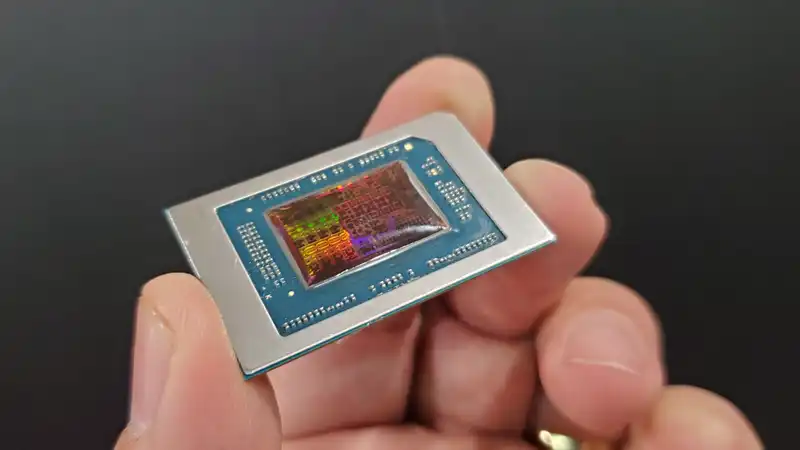It has been almost a month since AMD unveiled its Zen 5 processor architecture and new series of Ryzen CPUs at COMPUTEX 2024. However, one lucky person was able to obtain a sample of an engineering laptop with a Strix Point APU and conduct thorough architectural testing.
The results were posted by David Huang on his blog, and before I go into further detail about his findings, I should point out that the laptops used were not retail versions, so the numbers may change once the vendors officially launch their Zen 5-powered models. Unlike Ryzen processors for desktops, Strix Point consists of a monolithic chip, or a single piece of silicon that includes the CPU core, GPU, memory controller, and NPU.
Officially marketed under the brand name Ryzen AI 300, Juan tested a laptop with the Ryzen AI 9 365. It has four Zen 5 cores, boosted to about 5 GHz, and six compact Zen 5c cores, with a maximum clock speed of about 4 GHz. It is worth noting, however, that the Zen 5 cores in the Strix Point APU are not exactly the same as those used in the upcoming Ryzen 9000 series chips for desktops. [For example, each CCD (Core Complex Die) chiplet in the Ryzen 9 7950X has 32 MB of cache, whereas AMD has taken the unusual step of putting different caches in the "normal" and compact cores. in the Ryzen AI 9 365 case, the four Zen 5 cores have 16MB of L3 cache, while the six Zen 5c cores must share half of that, 8MB.
Also, all Strix Point cores have reduced vector/SIMD pipelines compared to Zen 4 APUs. For example, when performing 128-bit or 256-bit integer vector operations, the Ryzen 7 7840U processor has half the throughput per clock cycle of the Zen 4 core (512-bit operations remain the same).
However, Strix Point's Zen 5 core has clearly improved throughput for scalar operations compared to Zen 4, and has also seen a significant improvement in handling thread branching. Other advantages over the previous architecture include the ability to fetch up to twice the number of instructions when using two threads per core and significantly better read performance from the L2 cache. [Of course, this is very technical stuff, and these throughput figures do not necessarily translate well to actual applications.
Strix Point has been steadily appearing in the Geekbench v6 results database, and one such recent entry (dated June 24) shows a Ryzen AI 9 370HX (same as the 365, but with eight Zen 5c cores and a higher boost clock) with a single red score of 2,795 and a multithreaded score of 14,124; when benchmarked on an Asus ROG Ally with an AMD Z1 Extreme APU (renamed Zen 4 Ryzen 7 7840U chip), it scored 2,457 and 11, 155 respectively. 155 were recorded.
Geekbench sometimes has problems reporting CPU specifications correctly, especially for those that are not yet officially available, so the results should be taken with a pinch of salt. Nevertheless, while the 14% increase in single-threaded scores is somewhat consistent with AMD's claim that Zen 5 has a 16% increase in IPC over Zen 4, the 27% increase in multithreaded scores is a bit more complicated to break down.
The Ryzen AI 9 370HX has 12 cores and a total of 24 threads, while the Z1 Extreme has 8 cores and 16 threads. However, in the case of the former, which Geekbench clocks at 4,825 MHz, this is only for the Zen 5 core, meaning that the Zen 5c's cores are running at least 800 MHz slower than this.
The Z1 Extreme's eight cores are not split in this way, so some of the eight full cores run much faster than those on the Zen 5+5c chip.
In other words, AMD's new Strix Point APUs support up to 50% more total threads than the previous generation, but with slower clocks, less L3 cache in the Zen 5 cores, and lower integer vector throughput, the new laptop chips not as fast as you might think. Frame rates are still limited by the integrated GPU, so in games it probably won't make much difference.
Once we get some laptops with the Zen 5, we will know for sure.
.

Comments